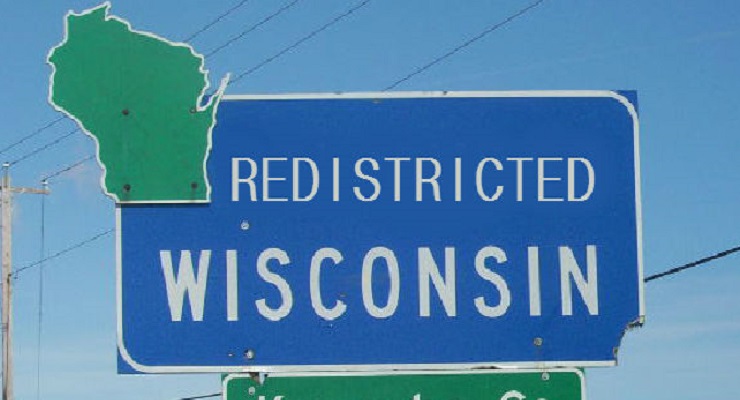
Two academics came up with the efficiency gap system that is key to the upcoming redistricting case before the Supreme Court known as Gill v. Whitford. University of Chicago law professor Nicholas Stephanopoulos and a research fellow at the Public Policy Institute of California Eric McGhee are the authors of the unique system for measuring the effects of redistricting. A recent article in Vox by Dylan Matthews had some interesting tidbits about the efficiency gap:
University of Chicago law professor Nicholas Stephanopoulos and political scientist Eric McGhee devised one promising option, which notes that gerrymandering forces the losing party to “waste” votes by placing all its voters into a small number of districts where the party gets a landslide, rather than spreading out those voters so they can have more impact.
Stephanopoulos and McGhee argue that fair districting requires a roughly equal number of wasted votes for each party, and that districting schemes where one party is wasting many more votes are unconstitutional. They call their metric the “efficiency gap,” calculated by taking the difference between the number of “wasted votes” for each party, and dividing that difference by the total number of votes.
According to the SCOTUSBlog, an organization”devoted to comprehensively covering the U.S. Supreme Court without bias and according to the highest journalistic and legal ethical standards”, the issues that will be decided in Gill v. Whitford include:
- Whether the district court violated Vieth v. Jubelirer when it held that it had the authority to entertain a statewide challenge to Wisconsin’s redistricting plan, instead of requiring a district-by-district analysis;
- whether the district court violated Vieth when it held that Wisconsin’s redistricting plan was an impermissible partisan gerrymander, even though it was undisputed that the plan complies with traditional redistricting principles;
- whether the district court violated Vieth by adopting a watered-down version of the partisan-gerrymandering test employed by the plurality in Davis v. Bandemer;
- whether the defendants are entitled, at a minimum, to present additional evidence showing that they would have prevailed under the district court’s test, which the court announced only after the record had closed; and
- whether partisan-gerrymandering claims are justiciable.
Nicholas Stephanopoulos is an expert in election law while is a political scientist who studies elections, legislative behavior, political reform, and surveys and polling. Here is the abstract from the full paper on the efficiency gap, titled “Partisan Gerrymandering and the Efficiency Gap” from October 1, 2014 in the University of Chicago Law Review by Nicholas Stephanopoulos and Eric McGhee:
The usual legal story about partisan gerrymandering is relentlessly pessimistic. The courts did not even recognize the cause of action until the 1980s; they have never struck down a district plan on this basis; and four sitting Justices want to vacate the field altogether. The Supreme Court’s most recent gerrymandering decision, however, is the most encouraging development in this area in a generation. Several Justices expressed interest in the concept of partisan symmetry — the idea that a plan should treat the major parties symmetrically in terms of the conversion of votes to seats — and suggested that it could be shaped into a legal test.
In this Article, we take the Justices at their word. First, we introduce a new measure of partisan symmetry: the efficiency gap. It represents the difference between the parties’ respective wasted votes in an election, divided by the total number of votes cast. It captures, in a single tidy number, all of the packing and cracking decisions that go into a district plan. It also is superior to the metric of gerrymandering, partisan bias, that litigants and scholars have used until now. Partisan bias can be calculated only by shifting votes to simulate a hypothetical tied election. The efficiency gap eliminates the need for such counterfactual analysis.
Second, we compute the efficiency gap for congressional and state house plans between 1972 and 2012. Over this period as a whole, the typical plan was fairly balanced and neither party enjoyed a systematic advantage. But in recent years — and peaking in the 2012 election — plans have exhibited steadily larger and more pro-Republican gaps. In fact, the plans in effect today are the most extreme gerrymanders in modern history. And what is more, several likely will remain extreme for the remainder of the decade, as indicated by our sensitivity testing.
Finally, we explain how the efficiency gap could be converted into doctrine. We propose setting thresholds above which plans would be presumptively unconstitutional: two seats for congressional plans and eight percent for state house plans, but only if the plans probably will stay unbalanced for the rest of the cycle. Plans with gaps above these thresholds would be unlawful unless states could show that the gaps either resulted from the consistent application of legitimate policies, or were inevitable due to the states’ political geography. This approach would neatly slice the Gordian knot the Court has tied for itself, explicitly replying to the Court’s “unanswerable question” of “how much political…effect is too much.”
Leave a Reply